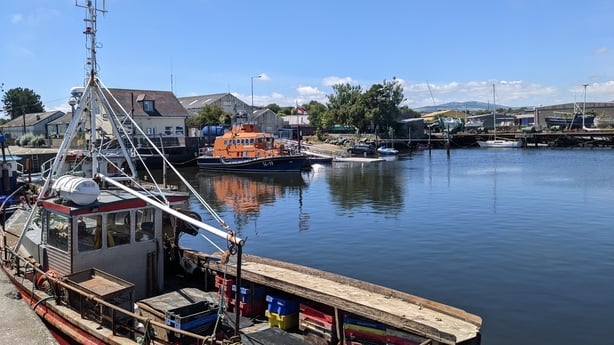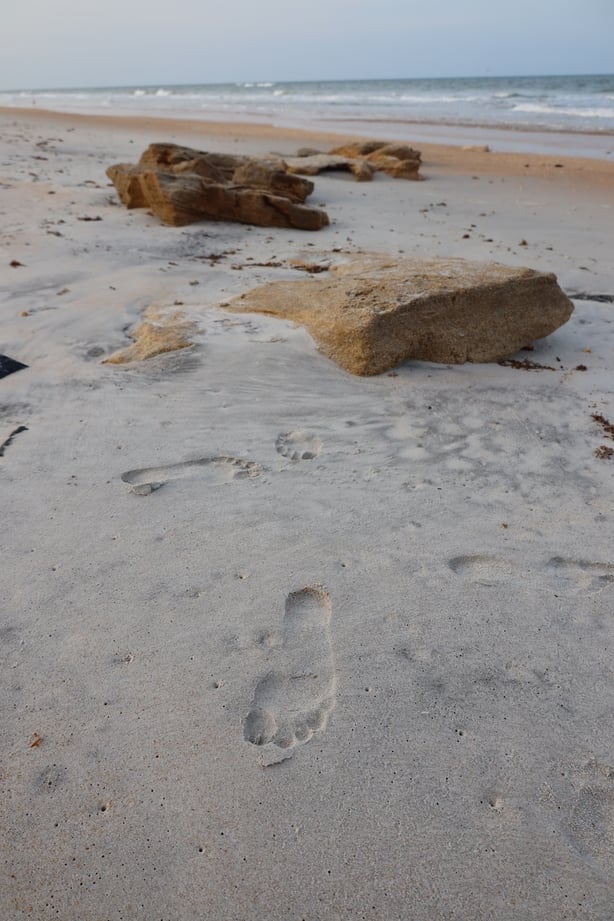Analysis: researchers have found human DNA in environmental samples of water, air and sand, of a high enough quality to identify you
By Jenny Whilde, Whitney Laboratory for Marine Bioscience, University of Florida
On a planet teeming with life, we are surrounded by fragments of DNA from myriad species. In the water, soil and even in the air, microscopic particles of biological material that have been shed from living organisms are all around us. DNA that has been shed into the surrounding environment is known as environmental DNA (eDNA).
Humans, too, shed DNA wherever we go. We cough, shed and flush our DNA into the surrounding environment, and signs of human life can be found everywhere but the most isolated locations. For the last couple of decades scientists have been able to collect and sequence eDNA, and use it to monitor biodiversity, wildlife populations and pathogens. This has been a boon to researchers, since elusive species can often go undetected by traditional monitoring methods, and eDNA can provide valuable information without needing to interact with or disturb the species of interest.
Here in Ireland, eDNA has successfully been used to detect invasive species in coastal habitats and to monitor endangered eel populations in freshwater environments. Across the Atlantic, in northeast Florida, Dr. David Duffy is using eDNA to study endangered sea turtles and the viral cancers to which they are susceptible. Duffy is an Assistant Professor of Wildlife Disease Genomics at the Whitney Laboratory for Marine Bioscience and Sea Turtle Hospital at the University of Florida (UF), where he and his team have been able to extract useful DNA from turtle tracks in beach sand and from water in the turtle hospital tanks, providing valuable insights into the turtles and the viruses and fibropapillomatosis tumours that afflict them.
We need your consent to load this rte-player contentWe use rte-player to manage extra content that can set cookies on your device and collect data about your activity. Please review their details and accept them to load the content.Manage Preferences
From RTÉ Brainstorm, what exactly are you giving away when you hand over your DNA for genetic testing?
The improvement of genetic sequencing technology in recent years means that it is now possible to easily sequence the DNA of every organism in a sample from the environment. Typically, researchers using eDNA tools have focused only on their species of interest and disregarded DNA from other species. Duffy's team suspected that the sand and water samples they were using to study sea turtles would also contain DNA from a number of other species, including, of course, humans. What they didn’t know was just how much human eDNA they could recover or how informative it would be.
In a newly published paper in Nature Ecology and Evolution, Duffy and his team describe how they took samples from a variety of locations in Florida, including water from the ocean and rivers in urban and rural areas, and sand from local beaches and a remote island never usually visited by people. High-quality human DNA was found in all of those locations except the remote island.

Duffy then returned to County Wicklow to test the technique there. Tracing along the Avoca River as it winds from its upland source down through rural villages and out to the ocean through Arklow town, Duffy found human DNA everywhere but the remote mountain tributary where the river starts, far from human habitation. Researchers in the Zoology Department in Trinity College Dublin and at Systems Biology Ireland in University College Dublin where he previously studied and worked, generously allowed him to process and analyse the water samples he gathered in Ireland.
Read more: How DNA is used to catch a killer
The scientists also collected air samples from a room in their veterinary hospital in Florida, with the permission of those who were present in the room. DNA was recovered from the air samples that matched the staff, the animal patient, and common animal viruses. Volunteers then gave permission for the scientists to take samples from their footprints in sand and sequence the DNA recovered from their footprints.


Surprisingly, the human eDNA found in the environment was high enough quality that the team could identify mutations associated with disease and determine the genetic ancestry of nearby populations (water) and study participants (sand and air). The eDNA from the footprints even yielded part of the volunteer’s sex chromosomes. "We’ve been consistently surprised throughout this project at how much human DNA we find and the quality of that DNA," Duffy said. "In most cases the quality is almost equivalent to if you took a sample from a person."
The research team realised that human eDNA could be a huge boon to research in fields as diverse as conservation, epidemiology, forensics and farming. Human environmental DNA, if handled correctly, could help archaeologists to track down undiscovered ancient human burial sites, or allow biologists to trace cancer mutations in a given population, or indeed provide useful forensic information to law enforcement agencies.
However, inadvertent retrieval of human environmental DNA (which Duffy has dubbed 'human genetic bycatch’, or HGB) or unregulated intentional recovery brings with it a host of ethical dilemmas. Individuals can potentially be identified by their eDNA and access to this level of detail about human individuals or populations, whether collected intentionally or not, comes with responsibilities relating to consent and confidentiality.
Such ethical issues must be considered carefully by scientists and regulators. While this study was conducted with approval from the institutional review board of the University of Florida, which ensures that ethical guidelines are adhered to during human research studies, there is no guarantee that everyone will treat this type of information ethically. "It is standard in science to make these sequences publicly available. But that also means if you don't screen out human information, anyone can come along and harvest this information," Duffy said. "That raises issues around consent. Do you need to get consent to take those samples? Or institute some controls to remove human information?"

Duffy and his team highlight that policymakers, scientific communities and other stakeholders need to take the issues around consent and privacy seriously and balance them against the possible benefits of studying this errant DNA. "Any time we make a technological advance, there are beneficial things that technology can be used for and concerning things that technology can be used for. It’s no different here," Duffy said. "These are issues we are trying to raise early so regulators and society have time to develop regulations."
Dr Jenny Whilde is Adjunct Research Scientist in Marine Bioscience at the Whitney Laboratory for Marine Bioscience, University of Florida.
The views expressed here are those of the author and do not represent or reflect the views of RTÉ


